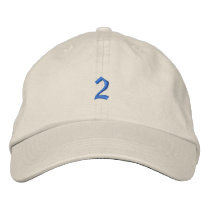Supply and demand is a bear. Or at least I suspect it it in this case.

You're going to hear his name a lot. In fact, you probably already have. Every offseason there is one name that rises above the others as a trade target. It's a little silly to speculate who that's going to be this offseason, because the Twins are gathering and planning their offseason priorities. this week. But the early leader is Hardy.
On the left is his writeup in the
TwinsCentric Offseason GM Handbook. I didn't write it (I think
Nick Nelson did) but I like it because it gives a thumbnail sketch of the important points. Namely:
1) Hardy is young and supposedly very good both offensively and defensively
2) He's available because the Brewers have a decent replacement and because he had a bad year in 2009
3) The Brewers would probably require pitching in return.
By the say, if you would like a dozen or so more thumbnail sketches of trade targets, stop by at check out the TwinsCentric Offseason GM Handbook. You can download 1/3 of it for free! Even Bill Bavasi would recognize that as a great deal. It's a good overview, but we have a little more room here, so let's break it down a bit.
He is (or at least was) very good both offensively and defensively. Defensively he has graded above average every year he was in the majors, and his minor league reviews mention that it's his defense that will compensate for his bat if he's to have a major league career. Even last year, when he struggled with back problems, his defense suffered a little, but was still above average.
Offensively he was worth drooling over in 2007 and 2008, averaging a .280 batting average with 25 home runs and an OPS around 800. Just to put that OPS in context,
Marco Scutaro, who will probably be the highest paid shortstop in this year's free agent market, posted an OPS of 788.
If that was the full story, then it's obvious he's exactly what the Twins need. Of course, if that was the full story, he wouldn't be available. And if he was, he certainly wouldn't be affordable.
Last year was a nightmare for Hardy, medically, athletically and ultimately financially. He had a fantastic spring training, but struggled for most of April before revealing he was having back problems. It turns out those back problems are something that he had been dealing with for years. In fact, it's often overlooked that he had some real injury issues early in his career, missing most of 2004 and 2006 with ankle and shoulder problems.
He surged early in May, and his back problems reappeared in late May. He struggled the rest of the year, posting a 229 batting average and a 659 OPS, about 50 points lower than
Orlando Cabrera. The season ended especially disastrously (and possibly litigiously) when he was sent down to AAA in August. That 3-week stint in Nashville is going to put off his free agency a full year, so he'll be a free agent after 2011.
The Brewers are looking for pitching in return, but there was a lot of debate about how much pitching. Others think and offer of
Glen Perkins and a high prospect might get the deal done. After all, he struggled last year, he's due at least $4 million this year, and he'll be a free agent after 2011.
I expect it would take more, and it would take more of exactly what the Twins don't have - veteran pitching. The Brewers don't want "kind of" pitchers. They are built to win now, and they want veteran pitchers. The ideal fit for the Brewers would be
Nick Blackburn, and given the starting pitching depth (or lack thereof) the Twins have, I can't imagine that happening. Nor would I advocate it.
The problem is that even with all his issues, Hardy is still young, solid defensively, affordable and capable of being a stud offensively. There are a LOT of teams interested in someone like that at shortstop. The Red Sox have been rumored to be interested. He would be a great fit on the Cardinals. The Jays would have a lot of interest if they don't re-sign Scutaro. The Tigers might if they lose
Placido Polanco. Ditto Astros and
Miguel Tejada. You can count on the Padres, Reds, Cubs and Orioles possible also being interested.
The name is great, and worth talking about. He's appropriately placed near the top of the list of trade targets. But that's also what makes it so hard to get him. Supply and demand is a bear.
 Sorry gang, but I'm cooked. The night was spent standing on frigid Fort Snelling fields watching The Boy™'s soccer playoffs. Then a late dinner, an Always Sunny In Philadelphia episode featuring the Phillies "Phranatic" kicking the crap out of Charlie, and I'm pretty much cooked at 9:30.
Sorry gang, but I'm cooked. The night was spent standing on frigid Fort Snelling fields watching The Boy™'s soccer playoffs. Then a late dinner, an Always Sunny In Philadelphia episode featuring the Phillies "Phranatic" kicking the crap out of Charlie, and I'm pretty much cooked at 9:30.






